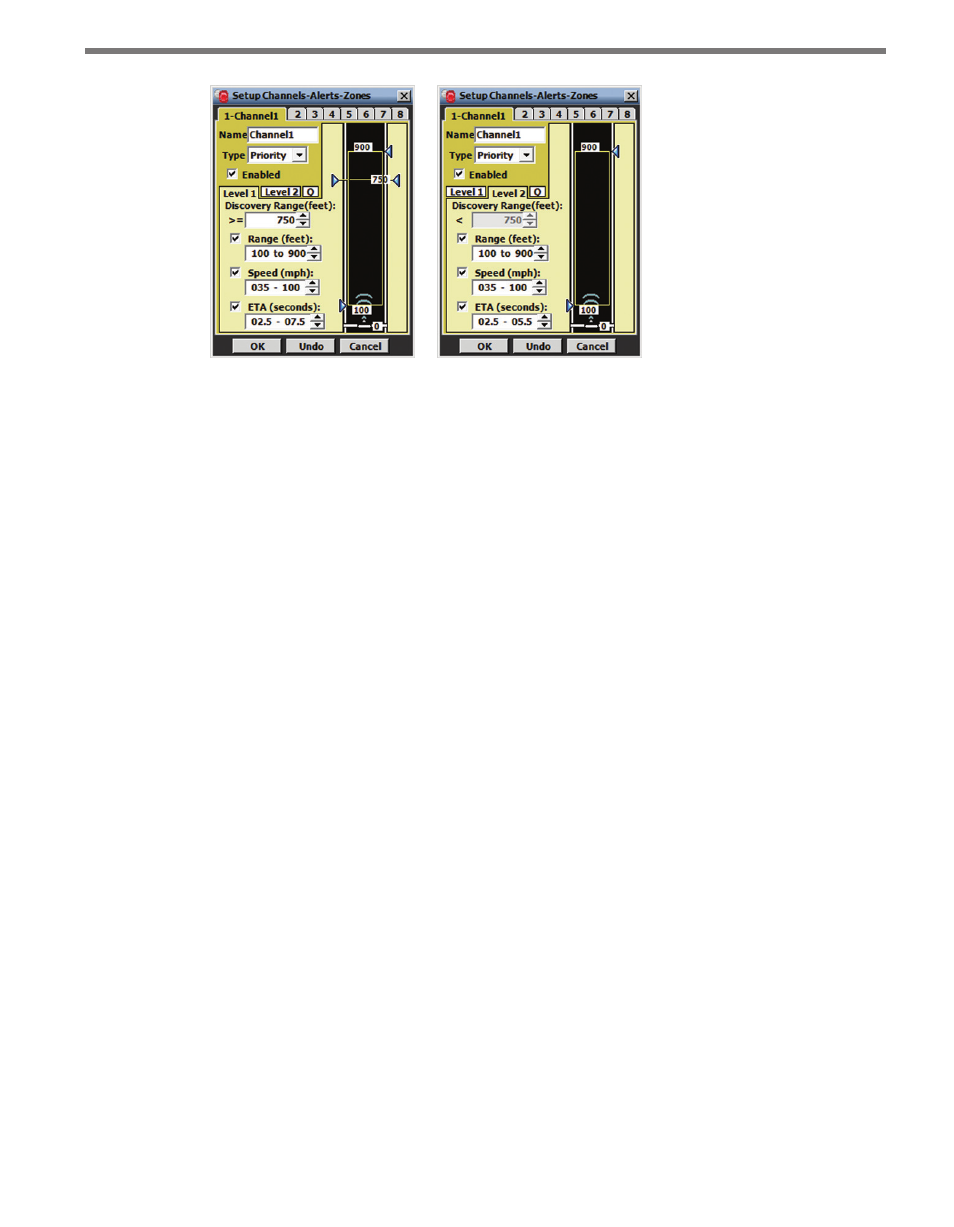Wavetronix SmartSensor Advance Extended Range (SS-200E) - User Guide User Manual
Page 77

76
CHAPTER 7 • CHANNELS-ALERTS-ZONES
Figure 7.6 – Setup Channels-Alerts-Zones Screen for Priority Channel
The level-one zone will activate the channel output when a level-one priority vehicle meets
the specified criteria. By default the ETAs protected are between 2.5 and 7.5 seconds be-
cause trucks and other large vehicles have been found to have a larger dilemma zone.
The level-two zone will activate the channel output when a level-two priority meets the
specified criteria. By default the ETAs protected are between 2.5 and 5.5 seconds because
passenger cars and other light-duty vehicles have been found to have a smaller dilemma
zone.
The third zone is a queue-clearance zone. This zone activates the channel output when the
initial queue of traffic is dissipating at low speeds. It is recommended that all three zones be
used in combination with 1.0 seconds of passage time in the controller.
For the queue clearance zone, a 1.0 passage time is added to the maximum time headway
between two vehicles occupying the zone at the same time to determine the maximum al-
lowable time headway. When the zone is 50-feet wide and the vehicles are 20-feet long, the
maximum time headway between two vehicles occupying the zone at the same time at 30
mph is approximately 1.6 seconds. After adding 1.0 seconds of passage time, maximum al-
lowable headway for 30 mph vehicles becomes 2.6 seconds. Slower vehicles will experience
a large maximum allowable headway, which is useful during the startup period of queue
dissipation in order to avoid gap out.
If you need to increase the maximum allowable headway you can increase the size of the
queue clearance zone, or the passage time. Normally it is recommended to keep the passage
time small and increase the size of the queue clearance zone. This is because the size of the
queue clearance zone will not matter when the flow speeds are above 35 mph, and because
you want to keep the passage time trim when trying to find a safe gap in high-speed traffic.